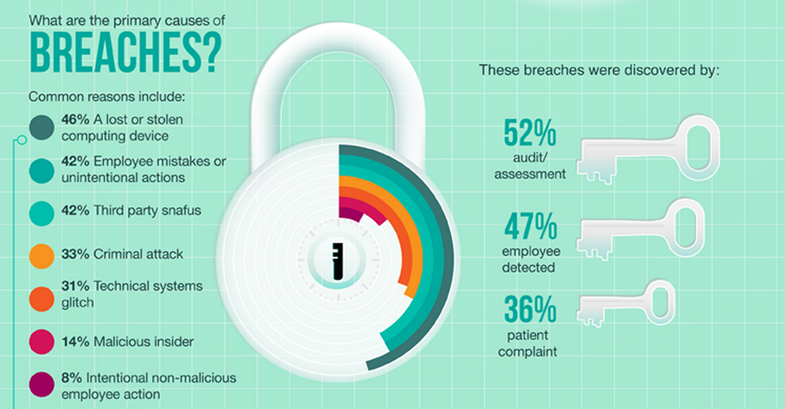Data Breaches Cost T-Mobile $16 Million: A Three-Year Security Breakdown

Table of Contents
The 2021 Data Breach: A Turning Point
The 2021 T-Mobile data breach stands as a watershed moment, highlighting the vulnerability of even major corporations to sophisticated cyberattacks.
The Scale of the Breach:
This breach impacted millions of T-Mobile customers, compromising sensitive personal information, including names, addresses, Social Security numbers, driver's license information, and even potentially some financial data. The sheer scale of the breach underscores the devastating potential of data breaches and the importance of robust security measures. The compromised data exposed customers to significant risks, including identity theft and financial fraud. This massive data exposure amplified the severity of the incident and its long-term repercussions.
The Immediate Financial Fallout:
The immediate costs for T-Mobile were substantial and included:
- Legal fees: Costs associated with legal representation and potential lawsuits from affected customers.
- Public relations expenses: Significant investment in crisis communication and reputation management strategies to mitigate the negative publicity.
- Costs associated with regulatory investigations: Expenses related to cooperating with regulatory bodies like the FTC and state attorneys general.
- Notification costs: The considerable expense of notifying all affected customers about the breach.
- Credit monitoring services: Providing free credit monitoring services to affected customers to help mitigate the risk of identity theft. This represented a substantial ongoing cost for the company.
The Security Gaps Exposed:
The attackers exploited several security vulnerabilities in T-Mobile's systems. These included weaknesses in password security, a lack of widespread multi-factor authentication (MFA), and potential flaws in their network security infrastructure. This breach highlighted the critical need for continuous security assessments and updates to protect against evolving threats.
Preceding Security Failures and Contributing Factors
The 2021 breach wasn't an isolated incident; it was the culmination of several preceding security failures and contributing factors.
Lack of Proactive Security Measures:
Evidence suggests that T-Mobile's investment in cybersecurity infrastructure and personnel may have been insufficient prior to the 2021 breach. A lack of proactive security measures, including regular penetration testing and vulnerability assessments, likely contributed to the successful exploitation of vulnerabilities. This highlights the importance of consistent investment in cybersecurity as a critical business expense, not a luxury.
Inadequate Employee Security Awareness:
Potential weaknesses in employee security training and awareness programs might have inadvertently facilitated the breaches. Lack of awareness about phishing attempts, social engineering tactics, and proper password management practices can significantly weaken an organization’s security posture. Strong employee training is paramount in preventing data breaches.
Slow Response to Security Threats:
While specific details may not be publicly available, there is reason to believe that T-Mobile's response to previous security incidents may not have been as swift or effective as it could have been.
- Time taken to identify and respond to security vulnerabilities: Delays in identifying and addressing vulnerabilities allowed attackers more time to exploit weaknesses.
- Effectiveness of incident response plans: The effectiveness of T-Mobile's incident response plans might have been inadequate, potentially leading to a prolonged breach and increased damage.
- Communication with affected customers: Delayed or inadequate communication with affected customers can exacerbate reputational damage and erode customer trust.
The $16 Million Price Tag: A Detailed Breakdown
The $16 million cost represents both direct and indirect financial repercussions.
Direct Costs:
Direct costs included remediation efforts, legal fees related to investigations and potential lawsuits, and the costs associated with notifying affected customers and providing credit monitoring services. These costs are immediately quantifiable and represent a significant drain on resources.
Indirect Costs:
Beyond direct costs, indirect costs significantly impacted T-Mobile. Reputational damage resulting from the breach led to a loss of customer trust, potentially affecting future customer acquisition and retention. This loss of trust translates into a significant financial loss over the long term.
Long-Term Impact on T-Mobile's Financial Performance:
The long-term impact on T-Mobile's financial performance is complex. While the $16 million figure is substantial, the full impact on stock prices, investor confidence, and future business is likely much larger and will be felt for years to come.
Lessons Learned and Best Practices for Preventing Future Data Breaches
The T-Mobile data breaches offer valuable lessons for organizations of all sizes.
Investing in Robust Cybersecurity Infrastructure:
Implementing strong password policies, mandating multi-factor authentication (MFA), performing regular security audits, and investing in advanced threat detection systems are crucial for preventing future data breaches. Regular vulnerability assessments and penetration testing are essential for identifying and mitigating weaknesses.
Strengthening Employee Security Awareness:
Comprehensive security awareness training and ongoing education for employees are vital. This training should cover phishing scams, social engineering tactics, secure password practices, and the importance of reporting suspicious activity. Regular refresher courses are key to keeping employees informed about the latest threats.
Proactive Threat Intelligence and Response:
Proactive threat intelligence gathering, coupled with a well-defined and regularly tested incident response plan, is crucial for minimizing the impact of data breaches. Rapid identification and response are critical to contain damage and prevent escalation.
Conclusion
The T-Mobile data breaches highlight the significant financial and reputational risks associated with inadequate cybersecurity measures. The $16 million cost serves as a stark warning, showcasing the consequences of security failures, insufficient employee training, and a lack of proactive threat management. The key takeaway is that investing in robust cybersecurity is not just an expense; it’s a strategic imperative for any organization. Don't let a costly data breach cripple your business. Learn from T-Mobile's experience and invest in robust cybersecurity measures today! Prevent data breaches, avoid data breaches, and mitigate data breach risk through proactive and comprehensive security practices.

Featured Posts
-
 1 Mayis Ta Yasananlar Emekci Direnisinin Sembolue
May 03, 2025
1 Mayis Ta Yasananlar Emekci Direnisinin Sembolue
May 03, 2025 -
 Recent Photos Of Christina Aguilera Spark Fan Speculation
May 03, 2025
Recent Photos Of Christina Aguilera Spark Fan Speculation
May 03, 2025 -
 Sanchajuje 2027 M Duris Atvers Hario Poterio Parkas Ka Zinome
May 03, 2025
Sanchajuje 2027 M Duris Atvers Hario Poterio Parkas Ka Zinome
May 03, 2025 -
 Rupert Lowes Defamation Lawsuit Against Nigel Farage Details Of The Allegations
May 03, 2025
Rupert Lowes Defamation Lawsuit Against Nigel Farage Details Of The Allegations
May 03, 2025 -
 Buying A Place In The Sun Tips And Advice For Successful Investment
May 03, 2025
Buying A Place In The Sun Tips And Advice For Successful Investment
May 03, 2025
